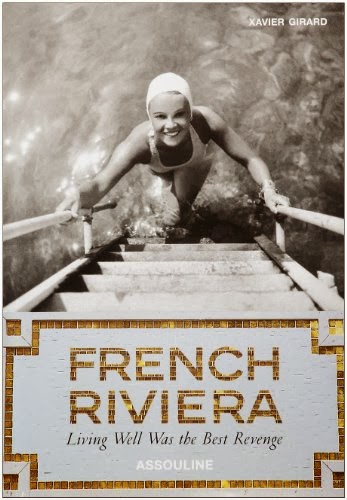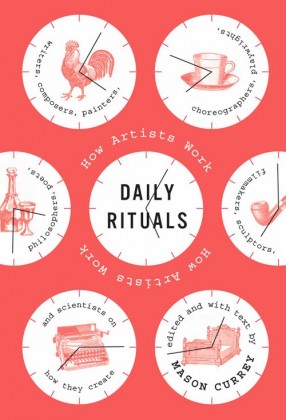With temperatures below zero, I am happy to have the chance to escape to warmer waters. My good friend and owner of the extraordinary store of the same name, Jung Lee has discovered a new treasure of a book, FRENCH RIVIERA: Living Well Was The Best Revenge. The description on the store website describes the book best by saying: there has never been any place on earth quite like the French Riviera in the 1920s and early 30s. Artists and writers from all over the world—including Picasso, Man Ray, Stravinsky, Coco Chanel, Cocteau, Edith Wharton, Diaghilev, and Hemingway—came to invent a new way of life. It’s no surprise that such a delightful book would be chosen to be among the exquisitely curated objects of Jung’s store.
available at jungleeny.com
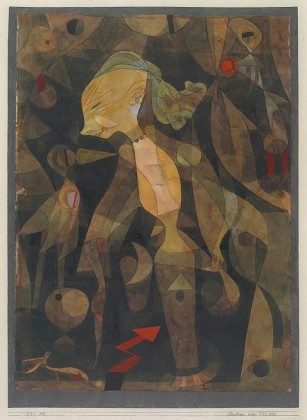 |
Paul Klee (1879-1940), A Young Lady’s Adventure 1922
Collection Tate Modern |
I just received the gorgeous new catalog, Paul Klee: Making Visible, the companion to the major Klee exhibition of the same name at the Tate Modern in London. In addition to the very serious and fascinating essays, the catalog also contains some great photographs and an excellent chronology that includes personal accounts of Klee from friends and colleagues such as Oskar Schlemmer and Alfred Barr, along with notes that place Klee in cultural context. And the reproductions of Klee’s work throughout are outstanding. I haven’t even made it all the way through, but I know this is one exhibition I will most definitely regret not getting to.
The EY Exhibition Paul Klee: Making Visible runs through March 9, 2014
Paul Klee: Making Visible, edited by Matthew Gale (Thames & Hudson, 2013)
www.tate.org.uk
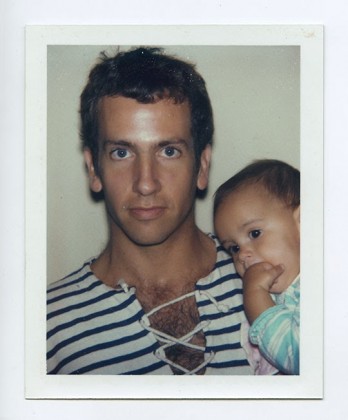 |
| Andy Warhol, Kenny Scharf, 1984, Tang Teaching Museum, gift of the Andy Warhol Foundation for Visual Arts. ©The Andy Warhol Foundation for the Visual Arts, Inc. |
We were very pleased to see a great collection of Andy Warhol polaroids from the 1970s and 80s last weekend at the Tang Teaching Museum, Andy Warhol: I’ll Be Your Mirror, just before it closed. Including portraits of Kenny Scharf, Princess Caroline of Monaco, John Denver, Vitas Gerulatis and even Lana Turner, the collection provides a wonderfully unique window into Warhol’s sensibilities and into his world. As part of the Andy Warhol Photographic Legacy Program, the Tang received several prints, over 100 polaroid photographs and 50 gelatin silver prints in two gifts in 2008 and 2013. In fact, over 180 college and university teaching museums, collections and galleries in this country have received similar gifts since 2007 through this program administered by The Andy Warhol Foundation for the Visual Arts. Over 28,500 Warhol photographs have been gifted in total. Photography so clearly informed his work and the Foundation, quite smartly, hopes these donations will promote discussion and further research in this realm. These photographs and the collections they form are so compelling, we imagine they have already fostered tremendous interest on campuses all over the United States.
www.warholfoundation.org/legacy/photographic.html tang.skidmore.edu
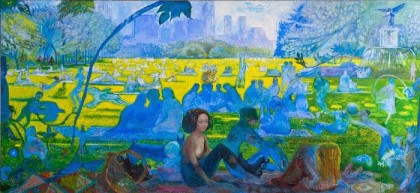 |
“Roller Blades” by Janet Ruttenberg
From Gatherings by Janet K. Ruttenberg (Pointed Leaf Press, 2013)
Photograph by Antoine Bootz |
One of the most inspired exhibitions this fall was Picturing Central Park: Paintings by Janet Ruttenberg at the Museum of the City of New York. Born in 1931, this is the first exhibition for Ruttenberg, a printmaker and painter born in Iowa. After years of studying and training in Chicago, Ruttenberg and her family moved to New York in 1965. Central Park and its inhabitants became her muse approximately 15 years ago. Her large-scale pieces are tremendous, measuring some 15 feet in width. Working on both canvas and paper, and in watercolor and oil, Ruttenberg also employs both photo collage and collage with painted fragments. The paintings that resonated most with me are two that contain video projections, one of which is of the Saturday night tango dancers at the Shakespeare statue with a soundtrack containing vocals by her friend, Oscar de la Renta. Really a most fascinating experience. This intriguing snapshot of Ruttenberg’s work has left me wanting to see so much more of what she has created over the past several decades.
Picturing Central Park: Paintings by Janet Ruttenberg is on view through January 5, 2014
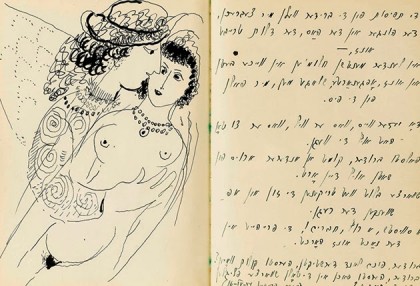 |
Bella and Marc Chagall, sketchbook, 1942-1965
Photograph Sotheby’s |
I have always been a big fan of Marc Chagall, as much the artist as the man. I find his large-scale works particularly impactful including the murals for the Metropolitan Opera House (1966), the ceiling of the Paris Opera (1964) and the sets and costumes for The Firebird (1945). Chagall’s life and art were inextricably intertwined which is, of course, clearly evident in his work — especially his deep love for his wife and muse, Bella. Chagall: Love, War and Exile at The Jewish Museum is a brilliant testament to this, and an exhibition very much worth seeing. Among the vast number of beautifully chosen paintings, works on paper, photographs and ephemera on view, there is one piece I continue to really think about. In 1942, when Bella and Marc fled Paris for New York during World War II, she started to translate poems from French to Yiddish in a hardcover sketchbook. Upon her unexpected death just two years later, the artist began to illustrate the book, no doubt as a way to stay connected to her. He continued to do so for the next twenty years. His adoration and reverence for Bella exudes from simply the two facing pages on display and I cannot think of a more intimate or loving gesture.
Chagall: Love, War and Exile runs through February 2, 2014.
www.thejewishmuseum.org
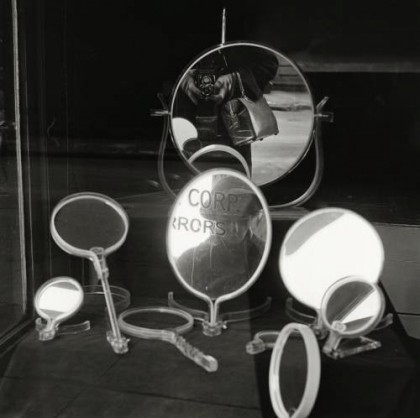 |
Vivian Maier (1926-2009), Self-portrait, 1955
The Maloof Collection |
I have been following the work, and the remarkable story of its discovery, of American street photographer Vivian Maier since it was introduced to the world in 2009, just six months after her death. She is now widely considered to be among the most important photographers of her generation. I love her eye and the way she portrayed the world through her images — often humorous, quite intellectual, always considered.
Born in Manhattan in 1926 to a French mother and Austrian father, Meier was raised mainly by her mother in New York and also in the French Alps for a time. It is believed she began taking pictures in the 1940s in Europe. In 1951 she accepted her first position as a children’s caretaker, a position she would hold with a number of families throughout her life, which enabled her to pursue photography, her mostly secret avocation. By the mid-1950s, Maier had relocated to Chicago where she would remain and whose streets became her subject matter.
To say that Maier was prolific is an understatement, to say that she was intensely private is not. After falling behind on rent payments at the storage facility where she kept her undeveloped rolls of film, negatives, slides and 8mm films, these tens of thousands of items were divided and sold at auction. One of these collections, containing some 30,000 negatives, was purchased by Chicago historian John Maloof. Her work had never been shown in public during her lifetime, it was Maloof who first showed us. In addition to numerous exhibitions, Maloof has also directed a documentary, Finding Vivian Maier, that premiered in September at the Toronoto International Film Festival and will be released in 2014. And last week, Vivian Maier: Self Portrait opened at Howard Greenberg Gallery, a wonderfully curated show and one definitely not to be missed.
Vivian Maier: Self Portrait runs through December 14 at Howard Greenberg Gallery, 41 East 57th Street, NYC www.howardgreenberg.com
https://www.vivianmaier.com/film-finding-vivian-maier/
I often think about and grapple with, and I know a number of my writer and artist friends do as well, if the way in which I work each day is the most effective and efficient given a very full life and work schedule. I was so intrigued when I discovered Daily Rituals: How Artists Work, a new book by Mason Currey. Born from his blog, Daily Routines, Daily Rituals is a compilation of how some 161 of the world’s most brilliant creators work or worked, or in some cases didn’t, on a daily basis. I must say, after reading these fascinating and quite diverse accounts (we’re talking Simone de Beauvoir, Igor Stravinsky, Haruki Murakami, Louise Bourgeois, Andy Warhol, Albert Einstein…), I found myself inspired and reassured to carry on with my own daily ritual very much as it is, with a few more mind-clearing walks thrown in to the mix.
Daily Rituals: How Artists Work by Mason Currey (Alfred A. Knopf, New York, 2013)
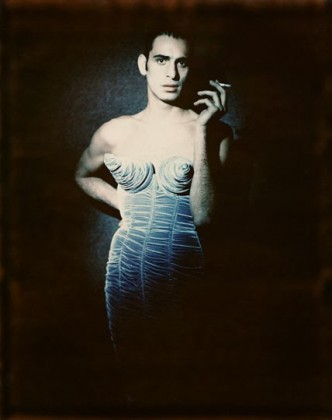 |
Photograph by Paolo Roversi. Tanel Bedrossiantz, 1992.
Jean Paul Gaultier’s “Barbès” women’s ready-to-wear fall-winter collection of 1984–85.
© Paolo Roversi |
The highly anticipated exhibition, The Fashion World of Jean Paul Gaultier: From the Sidewalk to the Catwalk, opened a couple of weeks ago at the Brooklyn Museum. We first saw it at the Montreal Museum of Fine Arts in 2011, the first stop on its international tour. The only exhibition to date devoted solely to Gaultier, it was definitely one of our favorite shows of the year. It is of course amazing to see so many of his pieces gathered in one space, some 140 in total. But it is very much a multimedia experience, with sketches, photography and film as well. The exhibition design is quite remarkable, especially the interactive mannequins that we still think about more than two years later. And we understand that there is a new element here in New York dedicated to Gaultier’s muses. We’re on our way to Brooklyn!
The Fashion World of Jean Paul Gaultier: From the Sidewalk to the Catwalk runs through February 23, 2014
https://www.brooklynmuseum.org/exhibitions/jean_paul_gaultier/
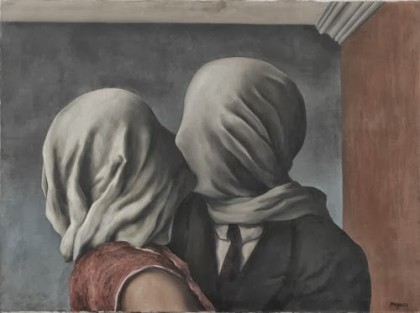 |
|
René Magritte, The Lovers, 1928
Gift of Richard S. Zeisler, The Museum of Modern Art
copyright 2013 C. Herscovici, Brussels/Artists Rights Society (ARS), New York
|
A few weeks ago we went to see Magritte: The Mystery of the Ordinary, 1926-1938 at the Museum of Modern Art. René Magritte is certainly among my favorite surrealist painters and it was rather tremendous to be among so much of his work, over 80 pieces in total. The exhibition, by virtue of itself, very much reinforced how intellectual Magritte’s work really is, as well as quite obviously the artist himself. And as an aside, I must admit, I was completely taken with Magritte’s rather perfect handwriting (so beautiful that I’m still thinking about it), as evidenced in his numerous word paintings and ancillary documents contained within this fantastic show. Magritte: the Mystery of the Ordinary is on view through January 12, 2014 — I’ll most definitely be making a return trip.
www.moma.org
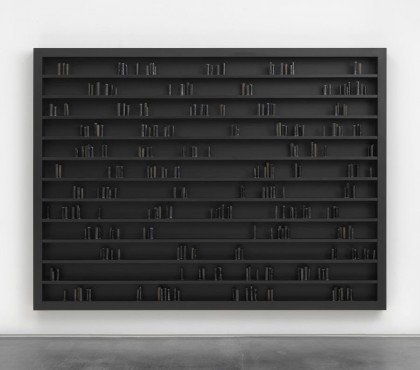 |
Edmund de Waal, Atemwende, 2013, copyright Edmund de Waal
Photograph by Mike Bruce |
For the past month, Gagosian Gallery has presented Atemwende, the first exhibition in this country of the work of notable British ceramicist Edmund de Waal. This is most certainly a show worth seeing. The vessels themselves are completely modern and seemingly free of historical and stylistic reference. However, the complete works and installation, in vitrines as collections, are perhaps a nod to the past, his own family history. Edmund de Waal is, afterall, the author of The Hare with Amber Eyes, one of my favorite books of the last few years. It is the remarkable, beautifully told story of de Waal’s Jewish family and the collection of Japanese netsuke (miniature carved sculpture) that has passed down through five generations beginning in 1870s Paris, residing presently with the artist himself in London.
Atemwende runs through October 19 at Gagosian Gallery, 980 Madison Avenue, NYC.
www.gagosian.com

